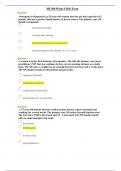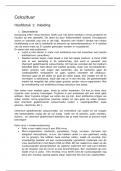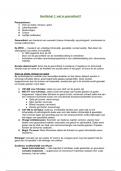Samenvatting
Cell biology and Immunology Summary
- Instelling
- Rijksuniversiteit Groningen (RuG)
The summary consists of the basic processes of cell biology and concepts of immunology. It focuses on topics like signal transduction, cell-cell communication, cytoskeleton, cell movement, cell cycle, cell death, multicellular development, tissue homeostasis, stem cells and cancer. The immunology...
[Meer zien]














